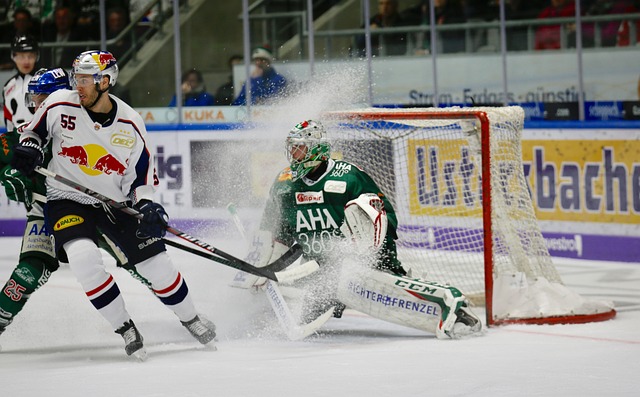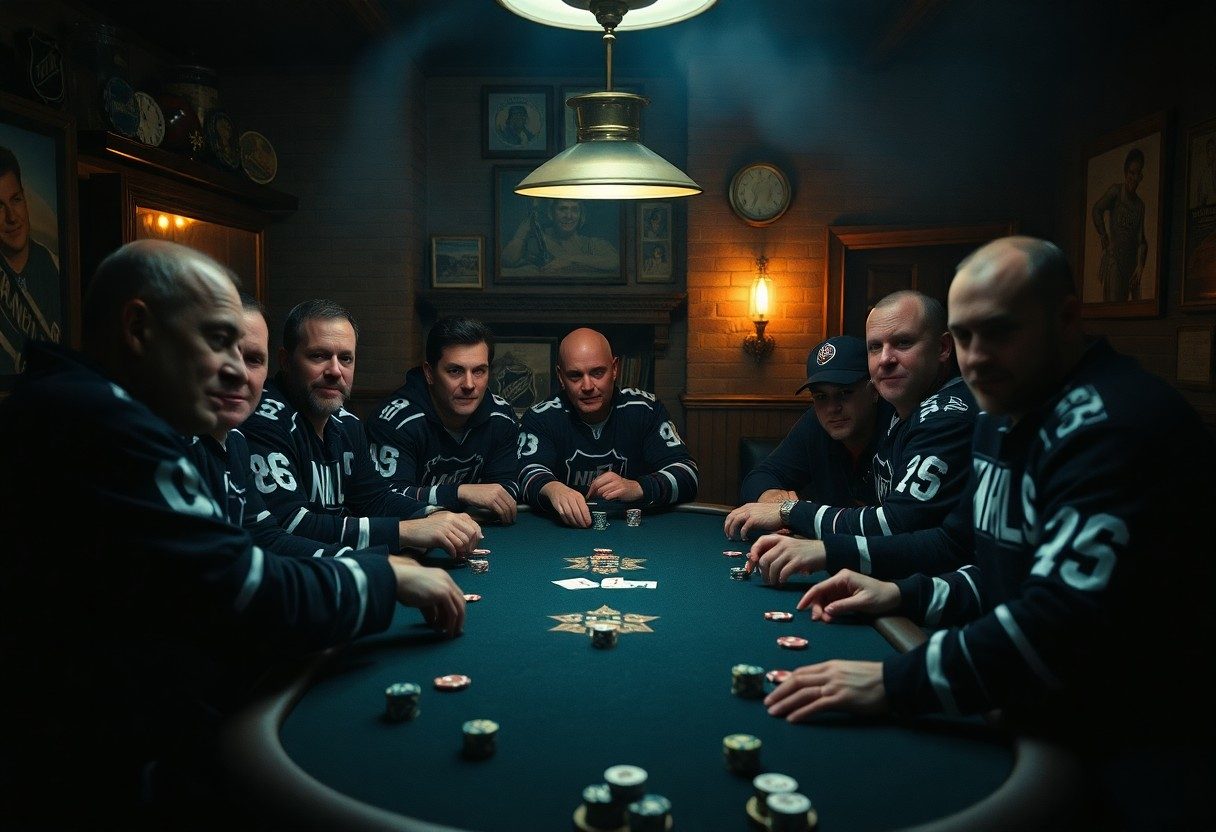You’ve witnessed legendary hockey careers unfold, but have you ever considered how a single draft selection can transform an entire franchise and influence the sport forever? The NHL draft has produced extraordinary talent that redefined hockey’s landscape, from Wayne Gretzky’s unprecedented scoring records to Mario Lemieux’s elegant artistry on ice. When you examine the most impactful draft picks in hockey history, you’ll discover how these selections didn’t just fill roster spots – they revolutionized playing styles, elevated team performance, and created lasting legacies that continue inspiring today’s players and captivating fans worldwide.
Historical Analysis of Game-Changing Draft Picks
You can trace the NHL’s evolution through its most impactful draft selections, where single picks transformed entire franchises and redefined hockey itself. From Bobby Orr’s revolutionary defensive play to Wayne Gretzky’s offensive mastery, these selections created ripple effects that extended far beyond individual careers. Draft picks like Mario Lemieux saved the Pittsburgh Penguins from bankruptcy while simultaneously elevating the sport’s profile in non-traditional markets. Each era produced transformative talents who didn’t just excel individually but fundamentally altered how teams approached player development, strategic planning, and long-term franchise building.
Transformative Players from Early NHL Drafts
Your understanding of hockey’s foundation begins with the 1963 amateur draft, where Montreal selected Garry Monahan first overall, establishing a system that would unearth legends. The early drafts produced game-changers like Gilbert Perreault (1970), who became Buffalo’s cornerstone, and Guy Lafleur (1971), whose dynamic style helped define the Montreal Canadiens’ dynasty. These early selections proved that systematic talent evaluation could identify players who would reshape offensive strategies and redefine what fans expected from elite performers across decades of professional hockey.
How Draft Strategies Evolved Over Decades
Your modern draft experience differs dramatically from the 1960s approach, where teams often selected players based on regional familiarity rather than comprehensive scouting. The 1980s introduced advanced analytics and international scouting, leading to discoveries like Dominik Hasek (199th overall, 1983) and Brett Hull (117th overall, 1984). Teams gradually shifted from size-focused selections to skill-based evaluations, recognizing that smaller, faster players could dominate in an evolving game that prioritized speed over brute strength.
Draft strategies underwent their most significant transformation during the salary cap era, beginning in 2005, when teams realized that finding elite talent in later rounds became crucial for sustained success. You can observe this shift through Detroit’s systematic approach under Ken Holland, selecting players like Pavel Datsyuk (171st overall, 1998) and Henrik Zetterberg (210th overall, 1999), who became franchise cornerstones despite their late selections. Modern teams now employ video analysis, advanced metrics, and psychological profiling to identify overlooked prospects, while European leagues and college programs provide deeper talent pools than ever before. The emphasis shifted from projecting physical development to evaluating hockey IQ, adaptability, and character traits that translate to professional success.
Scouting Reports: The Talent Behind the Picks
Behind every legendary draft pick lies a network of scouts who identified raw potential before it became obvious to the hockey world. Professional scouts spend countless hours in cold arenas across multiple continents, evaluating players who might never reach the NHL alongside future superstars. Their detailed reports become the foundation for draft decisions that can define franchises for decades. Teams like Detroit built dynasties by trusting scouts who found gems like Pavel Datsyuk in the 171st overall position, proving that thorough scouting often matters more than draft position.
Key Attributes of Top-Level Players
Elite prospects consistently demonstrate hockey IQ that separates them from skilled players who never reach stardom. Vision, anticipation, and decision-making under pressure appear in scouting reports of players like Connor McDavid and Sidney Crosby years before they dominated the NHL. Physical attributes like skating stride efficiency, puck protection ability, and compete level in board battles provide measurable indicators of future success. Character assessments examining leadership qualities, coachability, and response to adversity often prove equally predictive of long-term NHL impact.
The Impact of Scouting Technology on Draft Success
Video analysis platforms now allow scouts to break down every shift, tracking metrics like zone entries, defensive positioning, and puck recovery rates with unprecedented precision. Teams utilize advanced analytics to identify patterns that traditional observation might miss, creating comprehensive player profiles that extend far beyond basic statistics. GPS tracking systems measure acceleration, top speed, and movement efficiency during games, providing objective data to complement subjective scouting observations.
Modern NHL organizations combine traditional scouting expertise with sophisticated data collection methods that would have seemed impossible just two decades ago. Biometric monitoring tracks heart rate variability and recovery patterns, helping teams assess how prospects handle physical and mental stress throughout long seasons. Video coaching software enables frame-by-frame analysis of skating mechanics, shot release points, and defensive positioning, allowing scouts to project how specific skills might translate to NHL speed. Teams like Tampa Bay and Toronto have invested heavily in analytics departments that work alongside traditional scouts, creating hybrid evaluation systems that identify both statistical outliers and players whose intangible qualities don’t appear in spreadsheets. This technological evolution has democratized scouting to some extent, as smaller market teams can now access similar analytical tools that were once exclusive to wealthy organizations, though the human element of evaluation continues to play an vital role in draft success.
The Draft-Day Pressure Cooker: Stories from the Top Picks
You can feel the tension crackling through the arena as general managers clutch their final rankings, knowing that one decision could define their franchise for the next decade. Draft day transforms promising teenagers into million-dollar investments within seconds, creating moments of pure euphoria and devastating disappointment. Connor McDavid’s 2015 selection by Edmonton came with expectations so immense that analysts compared the pressure to inheriting a kingdom, while Taylor Hall’s 2010 first-overall pick carried the weight of an entire city’s playoff hopes on his eighteen-year-old shoulders.
Behind-the-Scenes Draft Experiences
Your favorite draft-day television coverage only scratches the surface of the chaos unfolding in team war rooms across the venue. Scouts frantically update medical reports minutes before selections, while general managers field last-second trade offers that could completely reshape their boards. During the 2003 draft, Pittsburgh’s management team spent the final thirty minutes before their pick debating between Marc-André Fleury and Eric Staal, with heated arguments echoing through their makeshift headquarters as conflicting scouting reports landed on Ray Shero’s desk.
The Psychological Toll on Young Athletes
Your draft position becomes permanently tattooed to your identity, following you through every contract negotiation and performance evaluation for your entire career. Players selected outside the first round carry that chip on their shoulders like armor, while top picks suffocate under expectations that transform every rookie mistake into front-page headlines. Sidney Crosby admitted years later that being labeled “The Next One” before even playing his first NHL game created sleepless nights and anxiety attacks during his debut season.
The psychological burden intensifies when you consider that these athletes are still teenagers navigating the transition from junior hockey to professional sports while millions of dollars and franchise futures hang in the balance. Draft busts like Alexandre Daigle, who was selected first overall in 1993, often struggle with depression and identity crises when they fail to meet unrealistic expectations, while late-round gems like Henrik Lundqvist use their overlooked status as motivation to prove scouts wrong. Sports psychologists now work closely with top prospects months before the draft, teaching coping mechanisms for handling media scrutiny and performance pressure that would challenge seasoned professionals.
Legacy of Legendary Picks: From Rookie to Hall of Fame
You can trace the most successful NHL franchises back to their draft table decisions, where general managers identified future Hall of Famers among teenage prospects. Wayne Gretzky’s unconventional entry into the NHL, Mario Lemieux’s first overall selection in 1984, and Sidney Crosby’s 2005 draft position all demonstrate how single picks can transform organizations for decades. These legendary selections didn’t just fill roster spots – they became franchise cornerstones who elevated entire teams, sold tickets, and created championship windows that lasted well beyond their playing careers.
Defining Moments that Shaped Careers
Draft day represents just the beginning of legendary careers, but specific moments often separate Hall of Fame picks from solid players. Gretzky’s first NHL goal, Lemieux’s debut where he scored on his first shot, and Patrick Roy’s rookie playoff performance in 1986 all showcased the exceptional talent that made their draft selections historic. Your understanding of draft success must include these pivotal early moments when young players proved their selection was justified and began building the legacies that would define their franchises for generations.
The Lasting Impact of Draft Picks on Franchise Success
Championship banners hanging in arenas today directly connect to draft decisions made years or even decades earlier. Edmonton’s dynasty of the 1980s stemmed from drafting Mark Messier, Jari Kurri, and Glenn Anderson in consecutive years, while Detroit’s success in the 1990s and 2000s traced back to late-round gems like Pavel Datsyuk and Henrik Zetterberg. Your franchise’s long-term success depends on these foundational picks who become team leaders, mentors, and the face of your organization.
The ripple effects of exceptional draft picks extend far beyond individual statistics and awards. Detroit’s drafting philosophy under Ken Holland created a culture of excellence that attracted free agents and made role players better through association with elite talent. Similarly, Pittsburgh’s selection of Mario Lemieux literally saved the franchise from bankruptcy, while their later pick of Sidney Crosby ensured continued relevance and financial stability. You see this pattern repeated across successful organizations: one transformative draft pick creates a winning culture that makes subsequent picks more likely to succeed, establishes a development system that maximizes talent, and generates the revenue necessary to build championship-caliber rosters around core drafted players.
Future Stars: Predicting the Next Greats
You’re witnessing a fundamental shift in how prospects develop and reach the NHL, with traditional scouting methods now complemented by sophisticated data analysis and international talent pipelines. European leagues produce increasingly skilled players who adapt quickly to North American ice, while junior hockey emphasizes speed and skill over size. Draft classes from 2020-2023 already show promising signs, with players like Connor Bedard and Adam Fantilli displaying the combination of hockey IQ, skating ability, and offensive creativity that defines modern superstars.
Trends in Youth Hockey and Emerging Talent
Youth hockey development has evolved dramatically, with specialized training facilities and year-round coaching producing more technically sound players than ever before. You’ll notice prospects entering the draft with advanced stick-handling skills, better positional awareness, and improved conditioning that previous generations developed only after turning professional. Programs in Sweden, Finland, and Switzerland now rival traditional hockey powers, while American development systems have produced consecutive Calder Trophy winners, reflecting the sport’s expanding global talent pool.
How Analytics Will Shape Coming Drafts
Advanced metrics now track everything from shot quality and defensive zone exits to micro-stats like puck possession time and passing efficiency under pressure. You can expect teams to prioritize players with high expected goals percentages and strong underlying numbers over traditional point totals, fundamentally changing how scouts evaluate talent across all positions.
Teams like Tampa Bay and Toronto have already demonstrated how analytics-driven drafting can uncover hidden gems in later rounds, identifying players whose statistical profiles suggest future NHL success despite modest draft positions. Your favorite team’s front office likely employs data scientists who analyze thousands of data points from junior leagues, tracking everything from zone entry success rates to faceoff win percentages in high-leverage situations. Video analysis software now measures skating stride efficiency and shot release times, while wearable technology provides real-time biometric data during games and practices. This technological revolution means teams can identify players whose skills translate well to professional hockey, even if their current league performance doesn’t immediately stand out to traditional scouts.
Conclusion
Summing up, you’ve witnessed how exceptional draft picks have fundamentally transformed hockey’s landscape over decades. From Wayne Gretzky’s offensive mastery to Mario Lemieux’s elegant power, these selections demonstrate the profound impact of identifying generational talent. Your understanding of the game deepens when you recognize how players like Gordie Howe, Bobby Orr, and Maurice Richard didn’t just excel individually—they redefined their positions and elevated entire franchises. These draft choices prove that successful scouting and player development create lasting legacies that extend far beyond statistics, shaping the sport’s evolution and inspiring future generations of players.











